#lepidoptera
Text
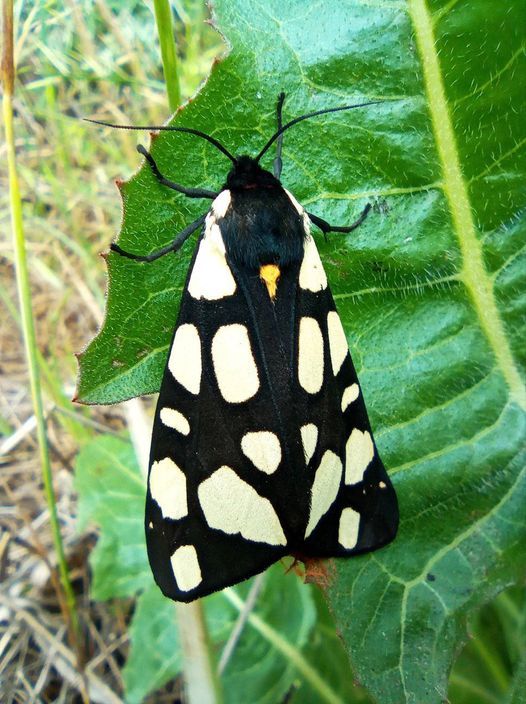
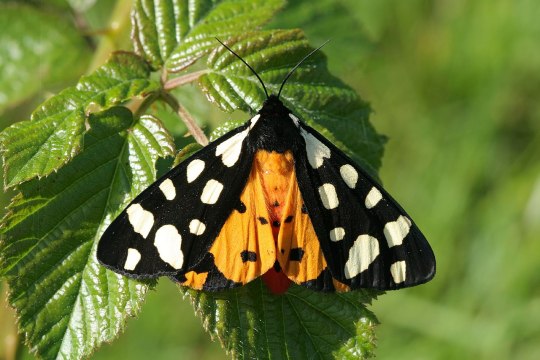
Cream-spot Tiger Moth (Arctia villica), family Erebidae, found mainly in southern Europe, western Asia, and northern Africa
photographs by Danny Chapman & Гал Ин Дао
249 notes
·
View notes
Text
It is officially BUG SEASON! in Chicagoland! @crevicedwelling , @onenicebugperday. I am delighted 🥰
I found a lovely Two-Spotted Stink Bug today!…
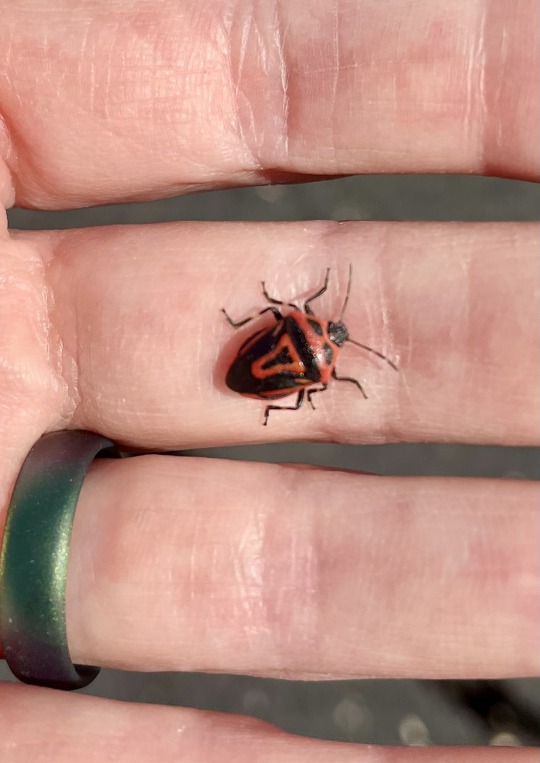
An adorable plume moth!…

… And this butterfly that I’d like a bit of help ID’ing. They’re doing courtship flights right now.

I love Bug Season 🐛🐜🐞 Some of my favorites are “stinkie bugs.” They are all named Jerri/Gerry.
#Pterophoridae#Plume Moth#Moth#Hemiptera#Perillus bioculatus#stink bug#two-spotted stink bug#butterfly#lepidoptera#very nice bugs#a very nice bug#bugs
72 notes
·
View notes
Text
oh my god ok i might be the last person alive to know this idk but im losing my mind reading Silence of the Lambs because they fucking. they changed the moth for the movie!
the moths featured in the Silence of the Lambs movie and as like the main big promotional cover poster are "Death's-head hawkmoths" - specifically African Death's-head hawkmoths (Acherontia atropos)
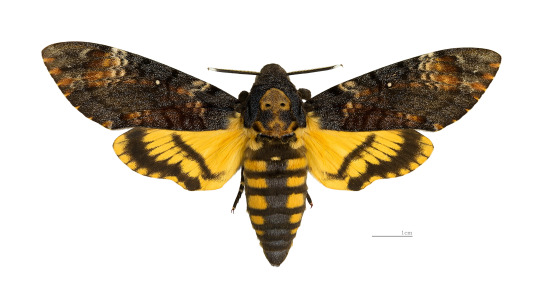
i specify because "Death's-head hawkmoth" also refers to the lesser death's-head hawkmoth (Acherontia styx)
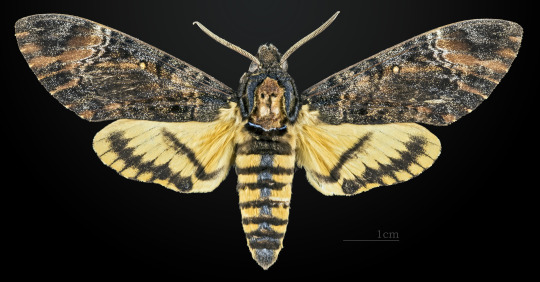
and the greater death's-head hawkmoth (Acherontia lachesis)
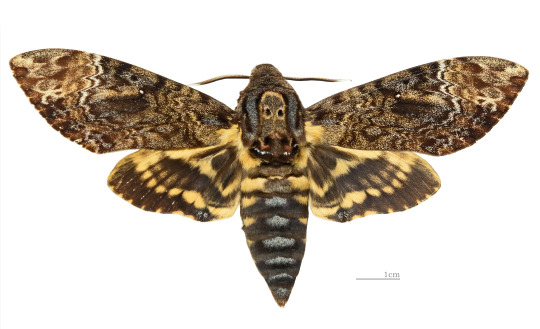
none of which are the moth named in the novel!
that honor actually belongs to this beauty <3

Ascalapha odorata (referred to in the novel by another name - Erebus odora) aka the Black Witch Moth - a large striking moth of a completely different family of Lepidoptera and the only one of these four moths that occurs naturally in the USA. I can understand the aesthetic decision to go with Acherontia atropos for the stand-out color and the eerie symbolism of the skull marking that death's-head hawkmoths bear, however I'm a little sad the Black Witch moth missed out on her 15 minutes of fame </3
#moths#lepidoptera#silence of the lambs#hannibal lecter#i really dont need to be tagging this a bunch bc i might be embarrassing myself being the last one to know about this#i just. like moths a lot.#ok to rb#the pics are literally all wikicommons they're the pics from the wikipedia pages for these species
41 notes
·
View notes
Text


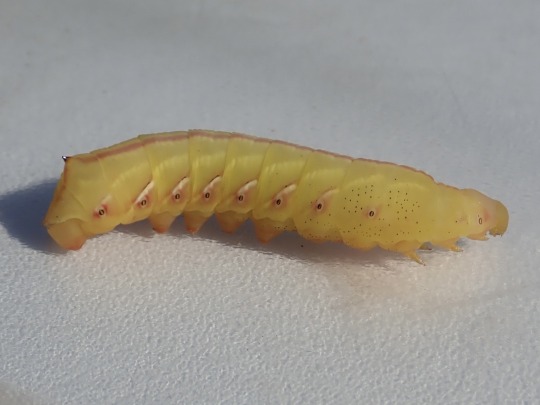


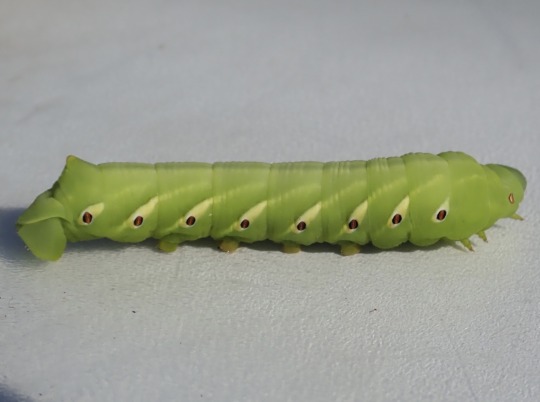
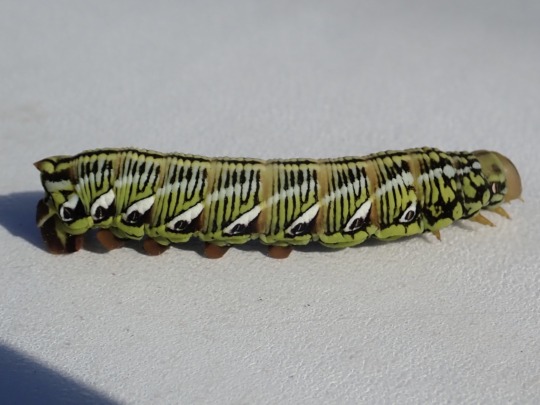
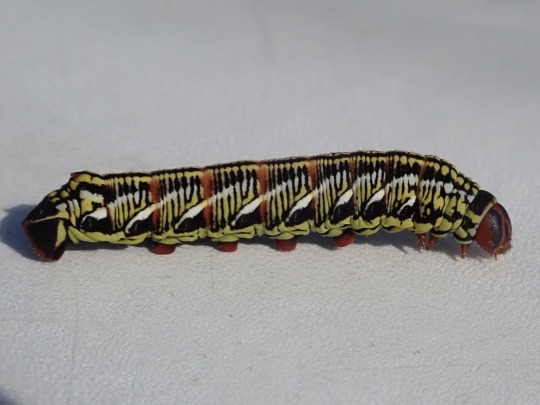

i found lots of different Eumorpha fasciatus caterpillar color morphs today!
8K notes
·
View notes
Text
butterflies have names like the Zesty Cobbler and moths have names like the Russet-tipped Hangman. hoverflies have names like the Horrid Scumsquatter and the millimeter brown speck tiniest beetle native to 3 square feet of Australian desert is called something like Anisopolyacanthus hades (no common name)
8K notes
·
View notes
Text
The Buff-Tip Moth: the resting posture, shape, and color/pattern of the buff-tip moth allows it to mimic a broken birch twig; the moth's buff-colored head and the patches on its hindwings even resemble freshly-snapped wood

It also definitely tends to look like there's a weird little smiley face in the setae surrounding the moth's head, which is arguably even more striking but for some reason none of the sources I dug up on this species seem to mention that weirdness.

This type of camouflage is generally referred to as a "protective resemblance" -- a form of mimesis in which an animal can avoid being preyed upon by mimicking an inedible/unremarkable aspect of its environment. Many different moths are able to disguise themselves in similar ways, and it is especially common within the family known as Lasiocampidae. Some of the other species that engage in protective resemblance include Gastropacha quercifolia, Gastropacha pardale, Gastropacha populifoli, Euthrix potatori, Euthrix laeta, and Calyptra minuticornis (along with the other members of genus Calyptra). Most of these moths disguise themselves as leaves/foliage.
The buff-tip moth is particularly adept at disguising itself, however, and the fact that it so strongly resembles such a specific object (i.e. not just a dead leaf or a vague piece of foliage -- but a broken twig from a silver birch tree, in particular) makes this disguise seem even more impressive/unique.
This species (Phalera bucephala) can be found throughout the British Isles, mainland Europe, and Asia, with its range extending into Eastern Siberia.

Sources & More Info:
Wildlife Insights: Buff-Tip Moth Identification Guide
ButterflyConservation.org: Buff-Tip Moth
The Wildlife Trusts: Buff-Tip Moth
Wildlife Insight: the Buff-Tip Moth
Moth Identification: P. busephala
Encyclopedia of Life: Global Map of Known Occurrences for P. busephala
Insecta: Phalera bucephala
Lepidoptera and their Ecology: P. busephaloides and P. busephala
Journal of Ecology & Evolution: Strong Foraging Preferences for Ribes alpinum in the Polyphagous Caterpillars of Buff-Tip Moth Phalera bucephala
Dickinson County Conservation Board: Protective Resemblance & other Forms of Mimesis/Mimicry
#lepidoptera#entomology#insects#bugs#buff tip moth#weird bugs#critters#animals#moths#are#wildly#underrated
23K notes
·
View notes
Text
please imagine some cosmic beings cheering for you like this whenever you accomplish little goals
#bugblr#bugs#insect#insects#entomology#bug#found elsewhere and uploaded by me#tiktok#inch worm#🐛#inchworm#looper#larvae#caterpillar#lepidoptera
61K notes
·
View notes
Text
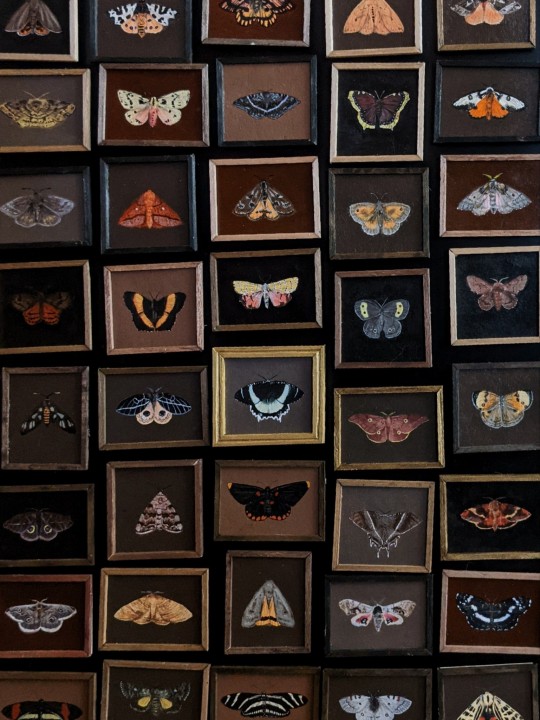
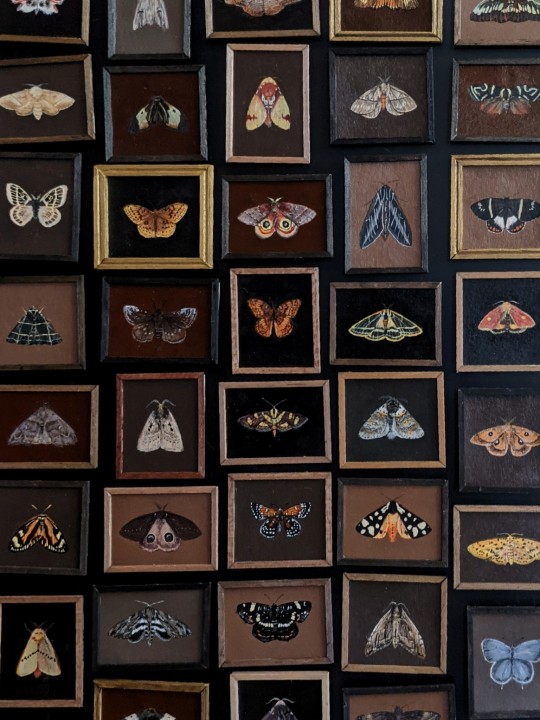
miniature paintings by Talula Merriwether (available here)
7K notes
·
View notes
Text
In the Willamette Valley of Oregon, the long study of a butterfly once thought extinct has led to a chain reaction of conservation in a long-cultivated region.
The conservation work, along with helping other species, has been so successful that the Fender’s blue butterfly is slated to be downlisted from Endangered to Threatened on the Endangered Species List—only the second time an insect has made such a recovery.
[Note: "the second time" is as of the article publication in November 2022.]
To live out its nectar-drinking existence in the upland prairie ecosystem in northwest Oregon, Fender’s blue relies on the help of other species, including humans, but also ants, and a particular species of lupine.
After Fender’s blue was rediscovered in the 1980s, 50 years after being declared extinct, scientists realized that the net had to be cast wide to ensure its continued survival; work which is now restoring these upland ecosystems to their pre-colonial state, welcoming indigenous knowledge back onto the land, and spreading the Kincaid lupine around the Willamette Valley.
First collected in 1929 [more like "first formally documented by Western scientists"], Fender’s blue disappeared for decades. By the time it was rediscovered only 3,400 or so were estimated to exist, while much of the Willamette Valley that was its home had been turned over to farming on the lowland prairie, and grazing on the slopes and buttes.
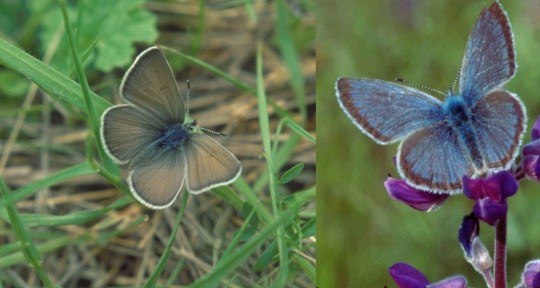
Pictured: Female and male Fender’s blue butterflies.
Now its numbers have quadrupled, largely due to a recovery plan enacted by the Fish and Wildlife Service that targeted the revival at scale of Kincaid’s lupine, a perennial flower of equal rarity. Grown en-masse by inmates of correctional facility programs that teach green-thumb skills for when they rejoin society, these finicky flowers have also exploded in numbers.
[Note: Okay, I looked it up, and this is NOT a new kind of shitty greenwashing prison labor. This is in partnership with the Sustainability in Prisons Project, which honestly sounds like pretty good/genuine organization/program to me. These programs specifically offer incarcerated people college credits and professional training/certifications, and many of the courses are written and/or taught by incarcerated individuals, in addition to the substantial mental health benefits (see x, x, x) associated with contact with nature.]
The lupines needed the kind of upland prairie that’s now hard to find in the valley where they once flourished because of the native Kalapuya people’s regular cultural burning of the meadows.
While it sounds counterintuitive to burn a meadow to increase numbers of flowers and butterflies, grasses and forbs [a.k.a. herbs] become too dense in the absence of such disturbances, while their fine soil building eventually creates ideal terrain for woody shrubs, trees, and thus the end of the grassland altogether.
Fender’s blue caterpillars produce a little bit of nectar, which nearby ants eat. This has led over evolutionary time to a co-dependent relationship, where the ants actively protect the caterpillars. High grasses and woody shrubs however prevent the ants from finding the caterpillars, who are then preyed on by other insects.
Now the Confederated Tribes of Grand Ronde are being welcomed back onto these prairie landscapes to apply their [traditional burning practices], after the FWS discovered that actively managing the grasslands by removing invasive species and keeping the grass short allowed the lupines to flourish.
By restoring the lupines with sweat and fire, the butterflies have returned. There are now more than 10,000 found on the buttes of the Willamette Valley."
-via Good News Network, November 28, 2022
#butterflies#butterfly#endangered species#conservation#ecosystem restoration#ecosystem#ecology#environment#older news but still v relevant!#fire#fire ecology#indigenous#traditional knowledge#indigenous knowledge#lupine#wild flowers#plants#botany#lepidoptera#lepidopterology#entomology#insects#good news#hope
4K notes
·
View notes
Text


probably one of the nicest looking moths I've found yet, Joseph's Coat Moth! I'm back from a trip to the northern tropics, and the wildlife did not disappoint.
Joseph's Coat Moth (Agarista agricola).
#sorry for my absence!#i have some incredible creatures to share to make up for it though#ljsbugblog#bugblr#entomology#insects#lepidoptera#moths#noctuoidea#owlet moths#agaristinae#forester moths#agarista#agarista agricola#Joseph's coat moth
4K notes
·
View notes
Text


Please enjoy this magical small emerald moth friend who visited me last year. I'm looking forward to mothing season starting again soon! 🦋💚
May your year be filled with all the soft beautiful moths you need to get through it, including this one.
#moth#moths#lepidoptera#motivational moth#motivational moths#insect#insects#bugblr#bug#bugs#pretty#pretty moth#pretty bug#cute animals#cute bugs#cool bugs#so green#emerald#emerald moth#cw bugs#cw insects
3K notes
·
View notes
Text

Tufted Moth (Sinna floralis), family Nolidae, India
photograph by Vishal Vijay Potdar
339 notes
·
View notes
Text

it is a huge year for saltmarsh moths. behold the ten i found in under a minute in my yard. what does it mean?
Estigmene acrea
2K notes
·
View notes
Text

Ascalapha odorata aka the Black Witch moth
aka the original starring moth of Silence of the Lambs
24 notes
·
View notes
Text
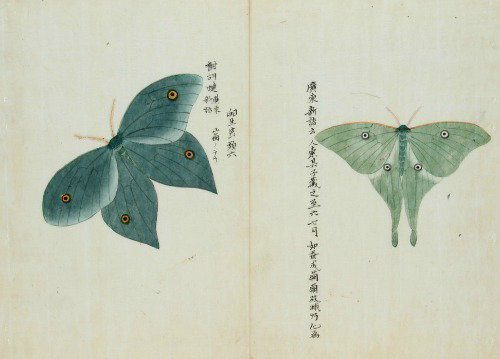



Keisuke Ito: Lepidoptera (1855)
25K notes
·
View notes
Text
here’s the silliest caterpillar I think I’ve ever seen in the mangroves of Singapore. it wasn’t just hairy, but coated with a thick cottony (wax?) coating that worked quite well to confuse the passing predatory weaver ants.

I did give it a curious poke and the fluff stuck to my finger, with no ill effects. bizarre little beastie, I wonder what it’ll mature into
6K notes
·
View notes